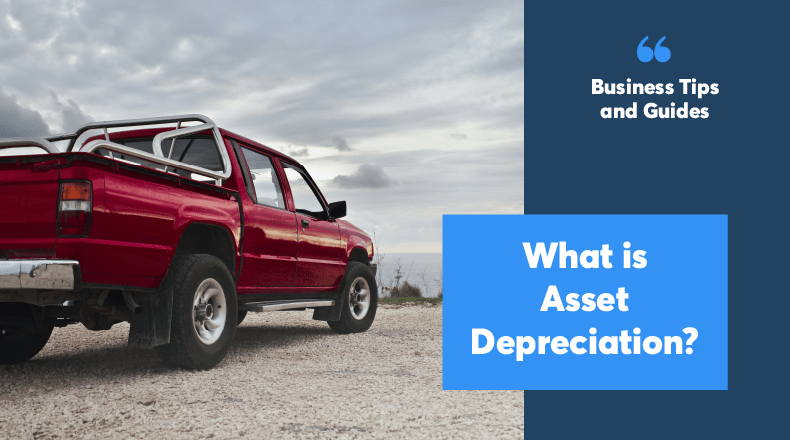Are you looking to buy an asset for your business? If so, figuring out the potential impact on your financial statements before making the purchase would be a wise move.
While small items like calculators and stationery are expensed in the year they’re purchased, the cost of fixed assets are depreciated over a period of time.
What does it mean to depreciate an asset?
Depreciating a tangible or physical asset involves spreading its cost over its useful life.
Accounting for the expense this way impacts on the profit you’ll report on your income statement and your tax return. So it’s good to know how it works.
Why non-current assets are depreciated
Depreciation of assets is based on the idea that expenses should be matched to the period in which related revenues are earned.
Say you buy a piece of equipment for $25,000 and pay for it upfront. You expect to use it in your business for the next 10 years.
Under the matching concept, you would account for the cost of the equipment by spreading it over 10 years. By doing this you’re matching it to the revenue you’re expecting it to generate.
If you write off the entire cost immediately, then you’ll overestimate the true cost associated with the revenue you earn during the equipment’s first year of use. You’ll also underestimate your costs in subsequent years.
Another way to think about depreciation as the fall in value of the asset as a cost of doing business. The value of an asset drops with wear and tear or if better alternatives become available.
Calculating asset depreciation
Most commonly, you’ll calculate asset depreciation using either the prime cost or diminishing value method.
Under the prime cost method, the value of your asset depreciates by the same amount every year. But with the diminishing value method, the value of your asset depreciates more during earlier years of use.
We’ll be covering depreciation calculations in more detail in another blog. Stay tuned to our blog to to see how to find out how to calculate asset depreciation!
Is depreciation a current asset?
Depreciation is a “non-cash” expense on the income statement rather than a current asset.
When you buy an asset, it’s recognised on the balance sheet, along with a corresponding liability if it’s paid by credit or a reduction in cash.
For every year the asset is used, its decline in value is recorded as an expense on your income statement. This reduces your net income, and could potentially lower the taxable income on your tax return too.
To figure out how much of the asset’s value has been “used up”, you’ll need to look at the asset’s accumulated depreciation.
Is accumulated depreciation an asset?
Accumulated depreciation is the total amount of depreciation recorded against an asset. It’s reported along with a company’s fixed assets on its balance sheet – but it isn’t actually an asset.
So why is accumulated depreciation a fixed asset item on the balance sheet if it’s not even an asset?
Showing accumulated depreciation on the balance sheet allows you to see how much value you have extracted from the asset so far. You’ll also be able to see the carrying or remaining value left on it. It provides an accounting measure of what your asset might be worth
What assets are not depreciated?
Only fixed assets that are expected to generate income for the business for more than a year are depreciated. Examples include tools, computers, office furniture, vehicles and buildings.
Some leased items could be depreciable but generally, you’ll need to own the asset.
Assets that don’t lose value, like land, can’t be depreciated. Neither can consumables or inventory.
Improvements to land or fixtures on the land may be treated as depreciable and separate from the land.
Intangible assets
Intangible assets are those without a physical form – like software, goodwill, trademark, and so on.
When we talk about the decline in value of intangible assets, we use the term amortisation rather than depreciation.
Most intangible assets can’t be amortised. But items that can be valued and have a finite useful life are amortised such as:
- in-house software,
- intellectual property,
- specific licences and access rights
The useful life of an asset
We have talked about depreciating or amortising an asset over its useful life, but it’s important to point out that an asset’s useful life is not the same as its lifespan.
Useful life refers to the number of years you’re expecting to use the asset to earn revenue. But don’t forget to consider that the asset’s lifespan might be much longer.
Say you buy computer equipment and plan to use it for the next 5 years, even though it can potentially remain functional for 8 years or more. The useful life for depreciation purposes is 5 years because that’s how long it will be useful to you.
You can take a similar approach to leasehold improvements that can’t be moved at the end of the lease. If your lease is 3 years, you’ll have to depreciate improvements over 3 years even if their lifespan is longer.
It’s essential to review useful lives of fixed assets at the end of each year and update estimates if they change.Accounting depreciation vs tax depreciation
A common point of confusion is how accounting depreciation differs from tax depreciation.
As discussed, from an accounting point of view:
Depreciation is about spreading the cost of an asset over its useful life and matching expenses with revenue. Accounting or book depreciation provides a proxy to how much your asset is currently worth.
However, from a tax point of view:
Depreciation is about recovering some of the cost of buying an asset through claiming tax deductions. When you claim a tax deduction for a business expense, it reduces your taxable income. This means you’ll have less tax to pay.
The amount of deductions you can claim and when you can claim them are determined by tax rules.
Keeping Track
Getting asset depreciation right is vital because it impacts both your income statement and balance sheet.
The easiest way to track asset depreciation is through accounting software like Xero. With Xero, you can record fixed assets and set your method of depreciation. Calculations are automatically done for each item and carrying values are tracked.
If our article has made you wonder whether you’re accounting for asset purchases or depreciation correctly, speak to one of our expert accountants at POP Business. Our experienced professionals can review your accounting records and help you set up a process that takes the effort out of tracking your fixed assets. So contact POP today!



